Features
Presidential Stakes and Aragalaya Memory Bells
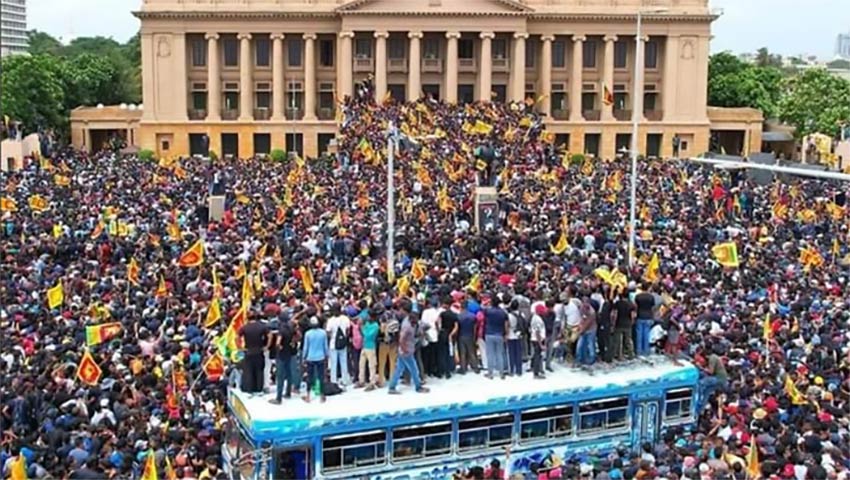
BY Rajan Philips
Nominations for the presidential elections were formalized on Thursday, leaving 37 days on the countdown to the national vote on September 21. Thirty nine candidates are in the fray and one of them, President Wickremasinghe, has been assigned the ‘Gas Cylinder’ symbol for the ballot. No more candidates or elephant rides for the UNP. Mr. Wickremesinghe is standing as an independent candidate, the last of the Lake House Mohicans, so to speak.
He could use the Gas Cylinder symbol to remind voters how as the caretaker President he has restored the supplies of goods that were a scarcity under the previous regime. Hopefully, the government will make sure that there are no gas cylinder explosions in people’s kitchens. That would be tragic for the households and could be electorally costly for the candidate.The gas cylinder could have been the only reminder to Sri Lanka’s aragalaya experience were it not for the events in Bangladesh that started ringing political memory bells in Colombo. Sri Lanka’s aragalaya experience and outcomes were far less severe or far reaching than what Bangladesh has now just gone through.
Not that Sri Lanka’s aragalaya had some demonstration effect in Bangladesh; Imran Khan had earlier refused to emulate it in Pakistan. It is only that the aragalaya experience here provides a prism for Sri Lankans to view events elsewhere, make comparative sense of them, and to be reminded that it is easier for bad history to repeat itself when nothing is learnt (say from the aragalaya experience) and everything is forgotten.
There is superficial comparison between Bangladesh and Sri Lanka. In Bangladesh, mounting protests in spite of brutal put down efforts by then Prime Minister Sheik Hasina forced her to flee the country seven months after winning a fourth consecutive election victory. Everyone in the Awami League government has disappeared according to the newly installed interim government leader Muhammad Yunus, a Nobel Laureate and one of the many critics and opponents of Ms. Hasina who have been virtually exiled or imprisoned during her long rule.
All of them are free now and the daughter of the father of nation, Sheikh Mujibur Rahuman, is now a political fugitive. Her remarkable achievements on the economic front notwithstanding. Her sanctuary in India will be a constant factor in the regional backbiting over the internal causes and the external catalysts of Bangladesh’s sudden woes.
The causes and consequences of the aragalaya in Sri Lanka were far more straightforward and were far more easily contained. To his credit, Gotabaya Rajapaksa did not order a brutal put down but that could also be because of his awareness of his own limitations. He left the country but was allowed to come back and live rather well at public expense. His nephew, Namal Rajapaksa is now a presidential candidate following his nomination at a family poruwa. Remarkable were the absentees, including Gotabaya Rajapaksa. That could be one of the more lasting effects of aragalaya – fissures in the Rajapaksa political edifice. Namal Rajapaksa could be the last of the lesser Mohicans in Sri Lankan politics. His first election candidacy could be his last, unlike Ranil Wickremesinghe who is running in his last election hoping to savour his first victory.
Polling Pointers
According to the latest (June 2024) polling data for “General Election Voting Intention” from the Institute for Health Policy (IHP), the SJB is leading the pack at 38% of voting intention, followed by the JVP/NPP at 26%, the SLPP at 16%, and the UNP at 7%. The other entities account for less than five percent each: ITAK – three percnt, SLMC – two percent, CWC – two percent, SLFP – one percent and others – four percent. There are technical problems with the sampling and methodology of the survey. Yet the periodical results could be indicative of any trends in the support levels.
Also, the answers to the survey question, “If there was a General Election today, which party would you vote for?” are not directly translatable as support for the candidates in the presidential election. Especially for President Wickremesinghe, who is contesting as an independent candidate hoping to garner votes from all voting constituents across the board, and not just seven percent of the votes based on the support for the UNP.
That said, inasmuch as it is the IHP poll that gave the JVP/NPP its early momentum at 31%, it is reasonable to interpret the new numbers as indicating a declining or flattening trend for the JVP/NPP. The JVP/NPP support is deemed to have dipped by five p.c. and the SJB support to have increased by one p.c. Yet 26% is quite a jump from the 3.2 p.c. and 3.8 p.c. support levels that the JVP/NPP registered at the 2019 presidential election and the 2020 parliamentary election.
There is no question that the JVP/NPP support has since ballooned to impressive proportions, but the question is whether the swelling support is enough to propel Anura Kumara Dissanayake to be one of the top two candidates in the September election. I say ‘top two candidates’ because it is almost impossible that any one of the three main candidates could be elected on the first ballot, and so the race is really to be one of the top two for reckoning in the second count of preferential votes.
Sajith Premadasa and Ranil Wickremesinghe have opposite reasons to be happy with the IHP polling for all its limitations. The SJB’s 38% support is significantly higher than its 24% vote share in the 2020 parliamentary election. It is obviously lower than the 42% share that Sajith Premadasa polled in the 2019 presidential election, and Mr. Premadasa might look to the 42% mark to be optimistic about reaching upward of 35% on the first count. That is if only Ranil Wickremesinghe would let him have it so easily.
President Wickremesinghe would be looking to slice off as much as he could from the UNP votes that Sajith Premadasa garnered for himself in the 2019 presidential election. How much would it be is the question. Mr. Wickremesinghe might consider it to be positive that the UNP’s support of seven p.c. in the IHP poll is more than thrice the 2.15 p.c. vote share the grand old party managed to collect in the 2020 parliamentary election. As an independent candidate, Mr. Wickremesinghe would be looking to pilfer votes across the board, but the two main vote banks that he could draw from are the SJB (which is the old UNP account) and the SLPP. RW would have been hoping for a maximum draw from the SLPP account which may have been possible if the Rajapaksas had endorsed his (RW’s) candidacy.
But with Mahinda and Basil Rajapaksa betraying Ranil and settling on Namal Rajapaksa to carry the family torch, RW’s earlier calculations might now need some revisiting. At the same time, the 16% support level for the SLPP in the IHP polling, from the highs of 52% in the 2019 presidential election and 59% in the 2020 parliamentary election, is indicative of the erosion of SLPP support in the country, or among the Sinhalese. Much of it likely would have migrated to the JVP, and they are not likely to trek to Ranil Wickremesinghe.
Put another way, Ranil Wickremesinghe might be starting with the smallest vote bank and the weakest organization for mobilizing votes. While all three candidates would look for support from the Tamil, Muslim and the Malayagha Tamil votes, not to mention the Sinhala Catholic vote, RW could be the one most dependent on them. Already, the SLMC has indicated its support for Sajith Premadasa, and the CWC for Ranil Wickremesinghe. Where the Tamil vote will fall or if the ITAK will openly support a candidate is still unknown.
A common Tamil candidate if there were to be one could be in a race to the bottom with Wijeyadasa Rajapakshe who might present himself as the only authentic Sinhala candidate in the mix. He apparently has the support of a third of the SLFP organization although none of the organizational claimants have any vote base left in the country. It would be impossible to discern where the pre-2005 SLFP voters are now and could be a problem for Ranil Wickremesinghe.
Now to voter preferences for the second and third best. With 39 candidates on the ballot, each voter can vote for any one of them and could also indicate her/his second and third preferences. As no candidate is likely to get more than 50% of the vote on the first count, the winner will have to be determined from the top two candidates. This will be done by eliminating the other 37 candidates and counting the second and third preferences marked on the eliminated ballots for either one of the top two candidates. Notably, the second/third preferences marked on the ballots of the top two candidates will not be counted against each other. Whoever gets the higher total after adding the preferential votes will be declared the winner.
Given their common voter allegiances, those who vote for Sajith Premadasa would likely cast their second preference for Ranil Wickremesinghe, and vice versa. So, if the two of them end up as the top two candidates, then their mutually preferential votes will be of no value. On the other hand, if one of them and Anura Kumara Dissanayake end up as the top two candidates, Mr. Dissanayake could be at a disadvantage when preferential votes are counted. The constitution also provides for drawing lots to determine the winner if two or more candidates end up with the same number of votes. That would be a long shot, but the three main candidates could end up with totals that are quite close. Picking a winner out of them without a runoff election is hardly a democratic exercise. That only begs the question: why have this system at all!
Features
The US-China rivalry and challenges facing the South
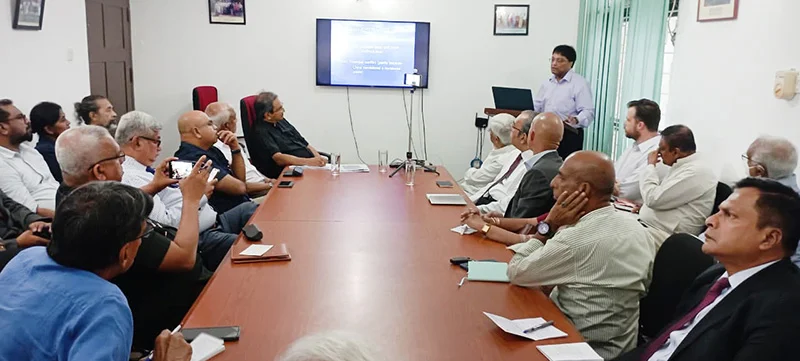
 The US-China rivalry could be said to make-up the ‘stuff and substance’ of world politics today but rarely does the international politics watcher and student of the global South in particular get the opportunity of having a balanced and comprehensive evaluation of this crucial relationship. But such a balanced assessment is vitally instrumental in making sense of current world power relations.
The US-China rivalry could be said to make-up the ‘stuff and substance’ of world politics today but rarely does the international politics watcher and student of the global South in particular get the opportunity of having a balanced and comprehensive evaluation of this crucial relationship. But such a balanced assessment is vitally instrumental in making sense of current world power relations.
Thanks to the Regional Centre for Strategic Studies (RCSS), Colombo the above window of opportunity was opened on December 8th for those sections of the public zealously pursuing an understanding of current issues in global politics. The knowledge came via a forum that was conducted at the RCSS titled, ‘The US-China Rivalry and Implications for the Indo-Pacific’, where Professor Neil DeVotta of the Wake Forest University of North Carolina in the US, featured as the speaker.
A widely representative audience was present at the forum, including senior public servants, the diplomatic corps, academics, heads of civil society organizations, senior armed forces personnel and the media. The event was ably managed by the Executive Director of the RCSS, retired ambassador Ravinatha Aryasinha. Following the main presentation a lively Q&A session followed, where many a point of interest was aired and discussed.
While there is no doubt that China is fast catching up with the US with regard to particularly military, economic, scientific and technological capability, Prof. DeVotta helped to balance this standard projection of ‘China’s steady rise’ by pointing to some vital facts about China, the omission of which would amount to the observer having a somewhat uninformed perception of global political realities.
The following are some of the facts about contemporary China that were highlighted by Prof. DeVotta:
* Money is steadily moving out of China and the latter’ s economy is slowing down. In fact the country is in a ‘ Middle Income Trap’. That is, it has reached middle income status but has failed to move to upper income status since then.
* People in marked numbers are moving out of China. It is perhaps little known that some Chinese are seeking to enter the US with a view to living there. The fact is that China’s population too is on the decline.
* Although the private sector is operative in China, there has been an increase in Parastatals; that is, commercial organizations run by the state are also very much in the fore. In fact private enterprises have begun to have ruling Communist Party cells in them.
* China is at its ‘peak power’ but this fact may compel it to act ‘aggressively’ in the international sphere. For instance, it may be compelled to invade Taiwan.
* A Hard Authoritarianism could be said to characterize central power in China today, whereas the expectation in some quarters is that it would shift to a Soft Authoritarian system, as is the case in Singapore.
* China’s influence in the West is greater than it has ever been.
The speaker was equally revelatory about the US today. Just a few of these observations are:
* The US is in a ‘Unipolar Moment’. That is, it is the world’s prime power. Such positions are usually not longstanding but in the case of the US this position has been enjoyed by it for quite a while.
* China is seen by the US as a ‘Revisionist Power’ as opposed to being a ‘Status Quo Power.’ That is China is for changing the world system slowly.
* The US in its latest national security strategy is paying little attention to Soft Power as opposed to Hard Power.
* In terms of this strategy the US would not allow any single country to dominate the Asia-Pacific region.
* The overall tone of this strategy is that the US should step back and allow regional powers to play a greater role in international politics.
* The strategy also holds that the US must improve economic ties with India, but there is very little mention of China in the plan.
Given these observations on the current international situation, a matter of the foremost importance for the economically weakest countries of the South is to figure out how best they could survive materially within it. Today there is no cohesive and vibrant collective organization that could work towards the best interests of the developing world and Dr. DeVotta was more or less correct when he said that the Non-alignment Movement (NAM) has declined.
However, this columnist is of the view that rather being a spent force, NAM was allowed to die out by the South. NAM as an idea could never become extinct as long as economic and material inequalities between North and South exist. Needless to say, this situation is remaining unchanged since the eighties when NAM allowed itself to be a non-entity so to speak in world affairs.
The majority of Southern countries did not do themselves any good by uncritically embracing the ‘market economy’ as a panacea for their ills. As has been proved, this growth paradigm only aggravated the South’s development ills, except for a few states within its fold.
Considering that the US would be preferring regional powers to play a more prominent role in the international economy and given the US’ preference to be a close ally of India, the weakest of the South need to look into the possibility of tying up closely with India and giving the latter a substantive role in advocating the South’s best interests in the councils of the world.
To enable this to happen the South needs to ‘get organized’ once again. The main differences between the past and the present with regard to Southern affairs is that in the past the South had outstanding leaders, such as Jawaharlal Nehru of India, who could doughtily stand up for it. As far as this columnist could ascertain, it is the lack of exceptional leaders that in the main led to the decline of NAM and other South-centred organizations.
Accordingly, an urgent task for the South is to enable the coming into being of exceptional leaders who could work untiringly towards the realization of its just needs, such as economic equity. Meanwhile, Southern countries would do well to, indeed, follow the principles of NAM and relate cordially with all the major powers so as to realizing their best interests.
Features
Sri Lanka and Global Climate Emergency: Lessons of Cyclone Ditwah
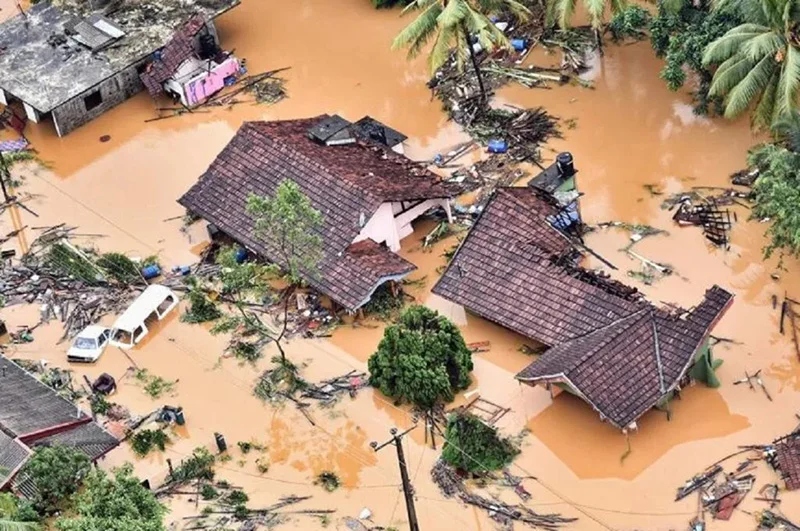
Tropical Cyclone Ditwah, which made landfall in Sri Lanka on 28 November 2025, is considered the country’s worst natural disaster since the deadly 2004 tsunami. It intensified the northeast monsoon, bringing torrential rainfall, massive flooding, and 215 severe landslides across seven districts. The cyclone left a trail of destruction, killing nearly 500 people, displacing over a million, destroying homes, roads, and railway lines, and disabling critical infrastructure including 4,000 transmission towers. Total economic losses are estimated at USD 6–7 billion—exceeding the country’s foreign reserves.
The Sri Lankan Armed Forces have led the relief efforts, aided by international partners including India and Pakistan. A Sri Lanka Air Force helicopter crashed in Wennappuwa, killing the pilot and injuring four others, while five Sri Lanka Navy personnel died in Chundikkulam in the north while widening waterways to mitigate flooding. The bravery and sacrifice of the Sri Lankan Armed Forces during this disaster—as in past disasters—continue to be held in high esteem by grateful Sri Lankans.
The Sri Lankan government, however, is facing intense criticism for its handling of Cyclone Ditwah, including failure to heed early warnings available since November 12, a slow and poorly coordinated response, and inadequate communication with the public. Systemic issues—underinvestment in disaster management, failure to activate protocols, bureaucratic neglect, and a lack of coordination among state institutions—are also blamed for avoidable deaths and destruction.
The causes of climate disasters such as Cyclone Ditwah go far beyond disaster preparedness. Faulty policymaking, mismanagement, and decades of unregulated economic development have eroded the island’s natural defenses. As climate scientist Dr. Thasun Amarasinghe notes:
“Sri Lankan wetlands—the nation’s most effective natural flood-control mechanism—have been bulldosed, filled, encroached upon, and sold. Many of these developments were approved despite warnings from environmental scientists, hydrologists, and even state institutions.”
Sri Lanka’s current vulnerabilities also stem from historical deforestation and plantation agriculture associated with colonial-era export development. Forest cover declined from 82% in 1881 to 70% in 1900, and to 54–50% by 1948, when British rule ended. It fell further to 44% in 1954 and to 16.5% by 2019.
Deforestation contributes an estimated 10–12% of global greenhouse gas emissions. Beyond removing a vital carbon sink, it damages water resources, increases runoff and erosion, and heightens flood and landslide risk. Soil-depleting monocrop agriculture further undermines traditional multi-crop systems that regenerate soil fertility, organic matter, and biodiversity.
In Sri Lanka’s Central Highlands, which were battered by Cyclone Ditwah, deforestation and unregulated construction had destabilised mountain slopes. Although high-risk zones prone to floods and landslides had long been identified, residents were not relocated, and construction and urbanisation continued unchecked.
Sri Lanka was the first country in Asia to adopt neoliberal economic policies. With the “Open Economy” reforms of 1977, a capitalist ideology equating human well-being with quantitative growth and material consumption became widespread. Development efforts were rushed, poorly supervised, and frequently approved without proper environmental assessment.
Privatisation and corporate deregulation weakened state oversight. The recent economic crisis and shrinking budgets further eroded environmental and social protections, including the maintenance of drainage networks, reservoirs, and early-warning systems. These forces have converged to make Sri Lanka a victim of a dual climate threat: gradual environmental collapse and sudden-onset disasters.
Sri Lanka: A Climate Victim
Sri Lanka’s carbon emissions remain relatively small but are rising. The impact of climate change on the island, however, is immense. Annual mean air temperature has increased significantly in recent decades (by 0.016 °C annually between 1961 and 1990). Sea-level rise has caused severe coastal erosion—0.30–0.35 meters per year—affecting nearly 55% of the shoreline. The 2004 tsunami demonstrated the extreme vulnerability of low-lying coastal plains to rising seas.
The Cyclone Ditwah catastrophe was neither wholly new nor surprising. In 2015, the Geneva-based Internal Displacement Monitoring Centre (IDMC) identified Sri Lanka as the South Asian country with the highest relative risk of disaster-related displacement: “For every million inhabitants, 15,000 are at risk of being displaced every year.”
IDMC also noted that in 2017 the country experienced seven disaster events—mainly floods and landslides—resulting in 135,000 new displacements and that Sri Lanka “is also at risk for slow-onset impacts such as soil degradation, saltwater intrusion, water scarcity, and crop failure”.
Sri Lanka ranked sixth among countries most affected by extreme weather events in 2018 (Germanwatch) and second in 2019 (Global Climate Risk Index). Given these warnings, Cyclone Ditwah should not have been a surprise. Scientists have repeatedly cautioned that warmer oceans fuel stronger cyclones and warmer air holds more moisture, leading to extreme rainfall. As the Ceylon Today editorial of December 1, 2025 also observed:
“…our monsoons are no longer predictable. Cyclones form faster, hit harder, and linger longer. Rainfall becomes erratic, intense, and destructive. This is not a coincidence; it is a pattern.”
Without urgent action, even more extreme weather events will threaten Sri Lanka’s habitability and physical survival.
A Global Crisis
Extreme weather events—droughts, wildfires, cyclones, and floods—are becoming the global norm. Up to 1.2 billion people could become “climate refugees” by 2050. Global warming is disrupting weather patterns, destabilising ecosystems, and posing severe risks to life on Earth. Indonesia and Thailand were struck by the rare and devastating Tropical Cyclone Senyar in late November 2025, occurring simultaneously with Cyclone Ditwah’s landfall in Sri Lanka.
More than 75% of global greenhouse gas emissions—and nearly 90% of carbon emissions—come from burning coal, oil, and gas, which supply about 80% of the world’s energy. Countries in the Global South, like Sri Lanka, which contribute least to greenhouse gas emissions, are among the most vulnerable to climate devastation. Yet wealthy nations and multilateral institutions, including the World Bank, continue to subsidise fossil fuel exploration and production. Global climate policymaking—including COP 30 in Belém, Brazil, in 2025—has been criticised as ineffectual and dominated by fossil fuel interests.
If the climate is not stabilised, long-term planetary forces beyond human control may be unleashed. Technology and markets are not inherently the problem; rather, the issue lies in the intentions guiding them. The techno-market worldview, which promotes the belief that well-being increases through limitless growth and consumption, has contributed to severe economic inequality and more frequent extreme weather events. The climate crisis, in turn, reflects a profound mismatch between the exponential expansion of a profit-driven global economy and the far slower evolution of human consciousness needed to uphold morality, compassion, generosity and wisdom.
Sri Lanka’s 2025–26 budget, adopted on November 14, 2025—just as Cyclone Ditwah loomed—promised subsidised land and electricity for companies establishing AI data centers in the country.
President Anura Kumara Dissanayake told Parliament: “Don’t come questioning us on why we are giving land this cheap; we have to make these sacrifices.”
Yet Sri Lanka is a highly water-stressed nation, and a growing body of international research shows that AI data centers consume massive amounts of water and electricity, contributing significantly to greenhouse gas emissions.
The failure of the narrow, competitive techno-market approach underscores the need for an ecological and collective framework capable of addressing the deeper roots of this existential crisis—both for Sri Lanka and the world.
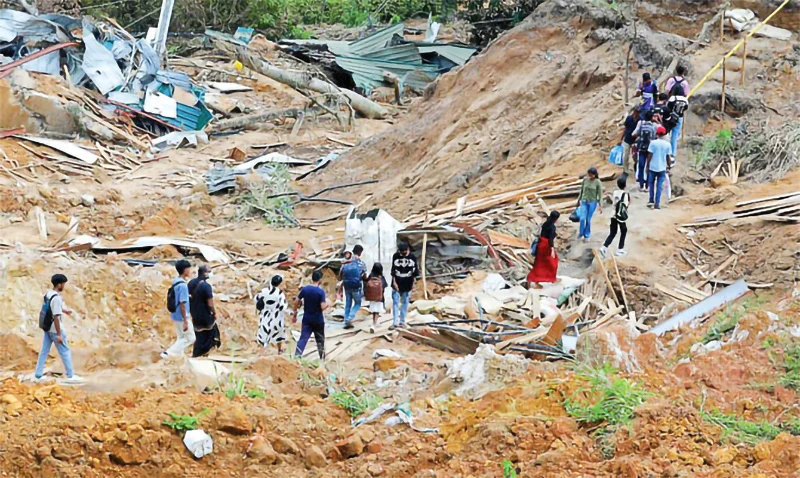
A landslide in Sri Lanka (AFP picture)
Ecological and Human Protection
Ecological consciousness demands
recognition that humanity is part of the Earth, not separate from it. Policies to address climate change must be grounded in this understanding, rather than in worldviews that prize infinite growth and technological dominance. Nature has primacy over human-created systems: the natural world does not depend on humanity, while humanity cannot survive without soil, water, air, sunlight, and the Earth’s essential life-support systems.
Although a climate victim today, Sri Lanka is also home to an ancient ecological civilization dating back to the arrival of the Buddhist monk Mahinda Thera in the 3rd century BCE. Upon meeting King Devanampiyatissa, who was out hunting in Mihintale, Mahinda Thera delivered one of the earliest recorded teachings on ecological interdependence and the duty of rulers to protect nature:
“O great King, the birds of the air and the beasts of the forest have as much right to live and move about in any part of this land as thou. The land belongs to the people and all living beings; thou art only its guardian.”
A stone inscription at Mihintale records that the king forbade the killing of animals and the destruction of trees. The Mihintale Wildlife Sanctuary is believed to be the world’s first.
Sri Lanka’s ancient dry-zone irrigation system—maintained over more than a millennium—stands as a marvel of sustainable development. Its network of interconnected reservoirs, canals, and sluices captured monsoon waters, irrigated fields, controlled floods, and even served as a defensive barrier. Floods occurred, but historical records show no disasters comparable in scale, severity, or frequency to those of today. Ancient rulers, including the legendary reservoir-builder King Parākramabāhu, and generations of rice farmers managed their environment with remarkable discipline and ecological wisdom.
The primacy of nature became especially evident when widespread power outages and the collapse of communication networks during Cyclone Ditwah forced people to rely on one another for survival. The disaster ignited spontaneous acts of compassion and solidarity across all communities—men and women, rich and poor, Buddhists, Christians, Muslims, and Hindus. Local and international efforts mobilized to rescue, shelter, feed, and emotionally support those affected. These actions demonstrated a profound human instinct for care and cooperation, often filling vacuums left by formal emergency systems.
Yet spontaneous solidarity alone is insufficient. Sri Lanka urgently needs policies on sustainable development, environmental protection, and climate resilience. These include strict, science-based regulation of construction; protection of forests and wetlands; proper maintenance of reservoirs; and climate-resilient infrastructure. Schools should teach environmental literacy that builds unity and solidarity, rather than controversial and divisive curriculum changes like the planned removal of history and introduction of contested modules on gender and sexuality.
If the IMF and international creditors—especially BlackRock, Sri Lanka’s largest sovereign bondholder, valued at USD 13 trillion—are genuinely concerned about the country’s suffering, could they not cancel at least some of Sri Lanka’s sovereign debt and support its rebuilding efforts? Addressing the climate emergency and the broader existential crisis facing Sri Lanka and the world ultimately requires an evolution in human consciousness guided by morality, compassion, generosity and wisdom. (Courtesy: IPS NEWS)
Dr Asoka Bandarage is the author of Colonialism in Sri Lanka: The Political Economy of the Kandyan Highlands, 1833-1886 (Mouton) Women, Population and Global Crisis: A Politico-Economic Analysis (Zed Books), The Separatist Conflict in Sri Lanka: Terrorism, Ethnicity, Political Economy, ( Routledge), Sustainability and Well-Being: The Middle Path to Environment, Society and the Economy (Palgrave MacMillan) Crisis in Sri Lanka and the World: Colonial and Neoliberal Origins, Ecological and Collective Alternatives (De Gruyter) and numerous other publications. She serves on the Advisory Boards of the Interfaith Moral Action on Climate and Critical Asian Studies.
Features
Cliff and Hank recreate golden era of ‘The Young Ones’

 Cliff Richard and Hank Marvin’s reunion concert at the Riverside Theatre in Perth, Australia, on 01 November, 2025, was a night to remember.
Cliff Richard and Hank Marvin’s reunion concert at the Riverside Theatre in Perth, Australia, on 01 November, 2025, was a night to remember.
The duo, who first performed together in the 1950s as part of The Shadows, brought the house down with their classic hits and effortless chemistry.
The concert, part of Cliff’s ‘Can’t Stop Me Now’ tour, featured iconic songs like ‘Summer Holiday’, ‘The Young Ones’, ‘Bachelor Boy’, ‘Living Doll’ and a powerful rendition of ‘Mistletoe and Wine.’
Cliff, 85, and Hank, with his signature red Fender Stratocaster, proved that their music and friendship are timeless.
According to reports, the moment the lights dimmed and the first chords of ‘Move It’ rang out, the crowd knew they were in for something extraordinary.
Backed by a full band, and surrounded by dazzling visuals, Cliff strode onto the stage in immaculate form – energetic and confident – and when Hank Marvin joined him mid-set, guitar in hand, the audience erupted in applause that shook the hall.
Together they launched into ‘The Young Ones’, their timeless 1961 hit which brought the crowd to its feet, with many in attendance moved to tears.
The audience was treated to a journey through time, with vintage film clips and state-of-the-art visuals adding to the nostalgic atmosphere.
Highlights of the evening included Cliff’s powerful vocals, Hank’s distinctive guitar riffs, and their playful banter on stage.

Cliff posing for The Island photographer … February,
2007
Cliff paused between songs to reflect on their shared journey saying:
“It’s been a lifetime of songs, memories, and friendship. Hank and I started this adventure when we were just boys — and look at us now, still up here making noise!”
As the final chords of ‘Congratulations’ filled the theatre, the crowd rose for a thunderous standing ovation that lasted several minutes.
Cliff waved, Hank gave a humble bow, and, together, they left the stage, arm-in-arm, to the refrain of “We’re the young ones — and we always will be.”
Reviews of the show were glowing, with fans and critics alike praising the duo’s energy, camaraderie, and enduring talent.
Overall, the Cliff Richard and Hank Marvin reunion concert was a truly special experience, celebrating the music and friendship that has captivated audiences for decades.
When Cliff Richard visited Sri Lanka, in February, 2007, I was invited to meet him, in his suite, at a hotel, in Colombo, and I presented him with my music page, which carried his story, and he was impressed.
In return, he personally autographed a souvenir for me … that was Cliff Richard, a truly wonderful human being.
-

 News4 days ago
News4 days agoOver 35,000 drug offenders nabbed in 36 days
-
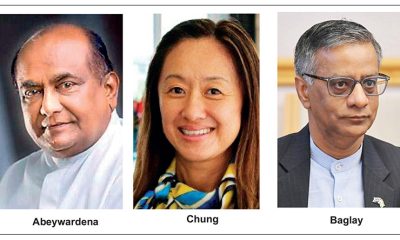
 Features2 days ago
Features2 days agoFinally, Mahinda Yapa sets the record straight
-
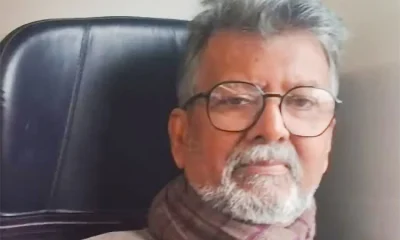
 News3 days ago
News3 days agoCyclone Ditwah leaves Sri Lanka’s biodiversity in ruins: Top scientist warns of unseen ecological disaster
-

 Business6 days ago
Business6 days agoLOLC Finance Factoring powers business growth
-

 News6 days ago
News6 days agoCPC delegation meets JVP for talks on disaster response
-

 News6 days ago
News6 days agoA 6th Year Accolade: The Eternal Opulence of My Fair Lady
-

 News4 days ago
News4 days agoRising water level in Malwathu Oya triggers alert in Thanthirimale
-
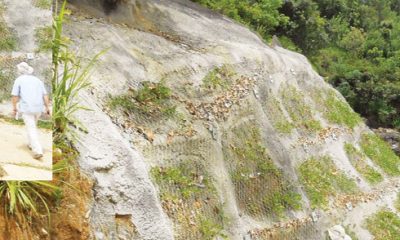
 Features5 days ago
Features5 days agoThe Catastrophic Impact of Tropical Cyclone Ditwah on Sri Lanka:













